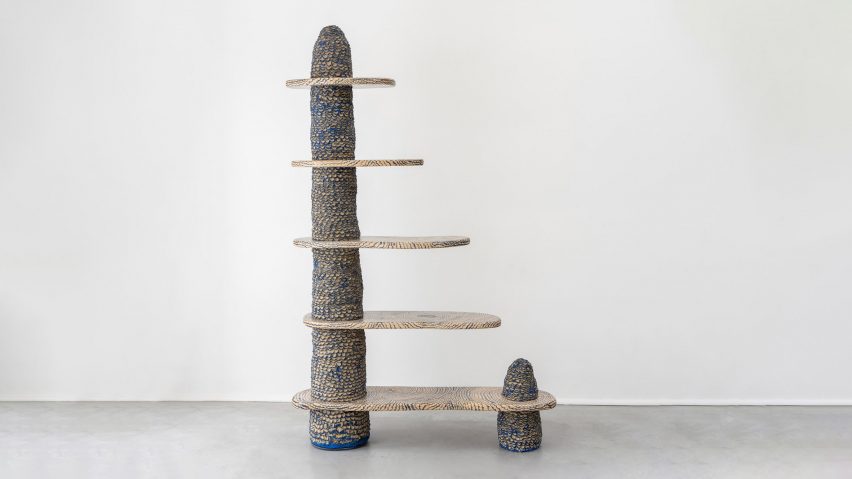
Five "fascinating objects" by Saltzman Prize-winner Attua Aparicio
London's Design Museum has named Attua Aparicio the winner of the 2024 Ralph Saltzman Prize for emerging designers. Here, the Spanish designer shares five projects that illustrate her material-led process.
After moving to London in 2009 to study design at the Royal College of Art, Aparicio originally explored the possibilities of applying craft techniques to industrial materials, such as plastic and steel, as one-half of design practice Silo Studio together with Oscar Lessing.
But since the duo parted ways in 2021, her solo projects have focused instead on pushing "primitive" materials to new limits, whether turning clay into load-bearing shelves or using waste borosilicate glass to create self-glazing ceramics.
"One thing I wasn't fully comfortable with in Silo's work was I wanted to avoid working with plastics and materials that could make the environment worse," Aparicio told Dezeen. "So I looked at different materials but the one that I settled on was ceramics."
"I never thought I was going to work with one material for so long," she added. "But it has so much room."
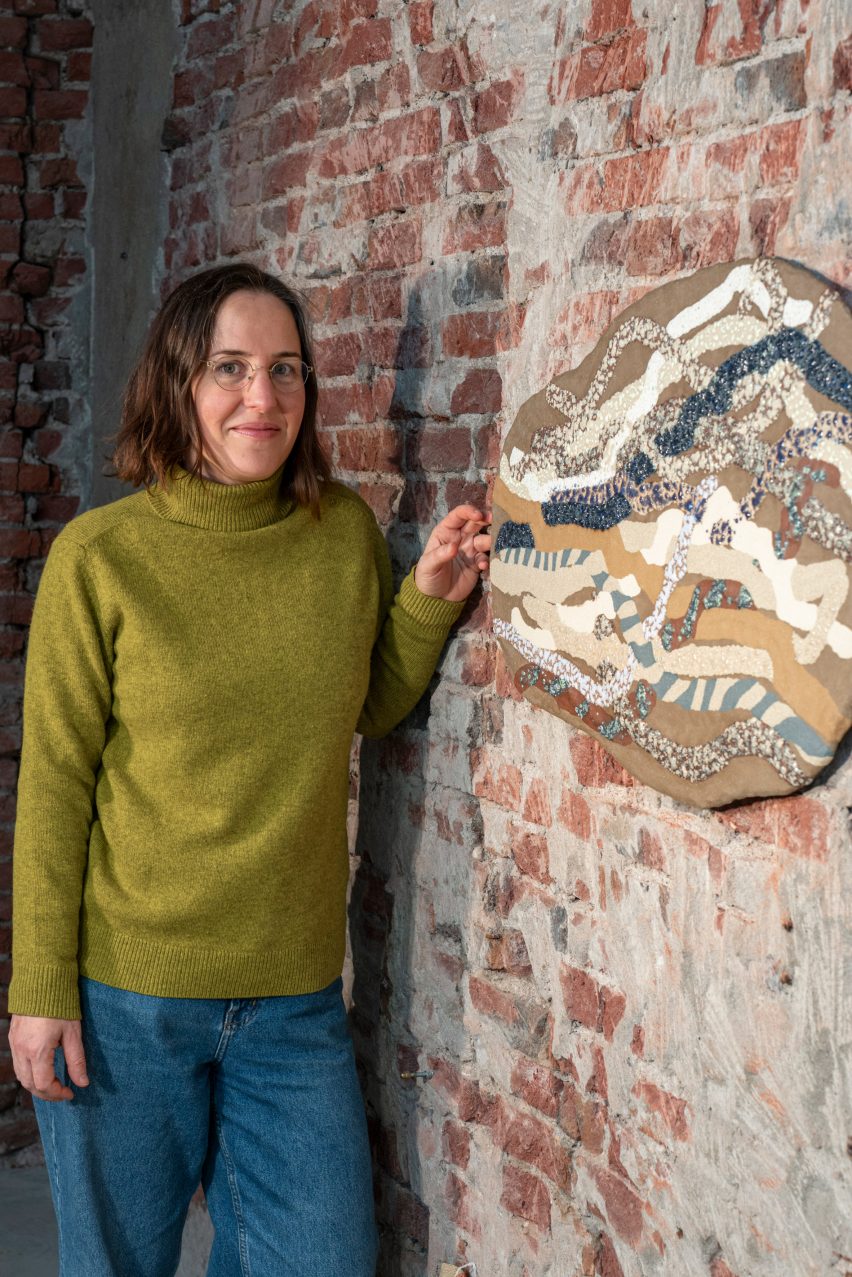
Aparicio was nominated for the third annual Ralph Saltzman Prize by Italian designer Martino Gamper and will receive a £5,000 bursary to further her work and the chance to exhibit it in a display at the Design Museum from 1 February until 15 April 2024.
"Attua Aparicio's exploration of different materials' properties and manufacturing techniques results in fascinating objects that push our understanding of form and its use to convey emotion and form attachments," said the Design Museum's chief curator Johanna Agerman Ross, who chaired this year's judging panel.
"While her interest in using waste glass and questioning the notion of waste points to a preoccupation with sustainable practices, her research points to a reinvention of a sustainable aesthetic."
The Ralph Saltzman Prize was founded in 2022 by Lisa Saltzman in collaboration with the Design Museum to spotlight young design talent and honour the legacy of her father Ralph Saltzman, the late co-founder and president of materials company Designtex.
Read on for five key projects to know from this year's winner.
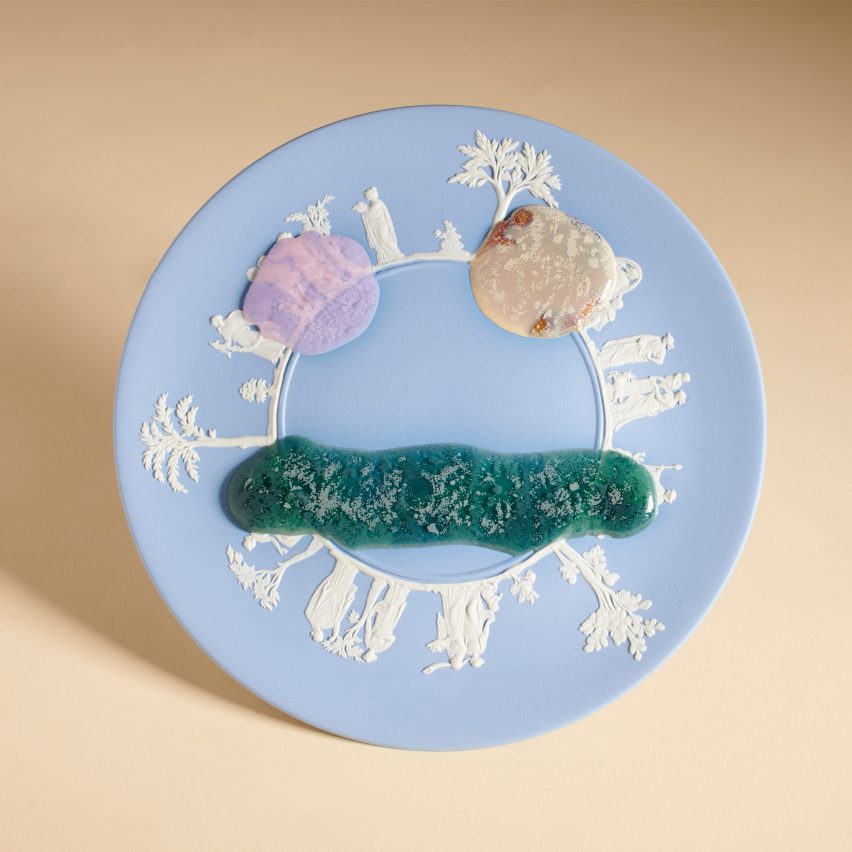
Expressive proverbs, 2019
This collection of 100 decorative plates, born during a residency in China's porcelain capital of Jingdezhen, was one of Aparicio's first experiments in fusing ceramics and glass.
This combination has historically proved elusive to ceramicists, as glass has a lower melting temperature than clay, causing it to run off like water and accumulate at the bottom of the kiln.
Aparicio solved this conundrum by using borosilicate glass – a relatively novel kind of glass that is used to form laboratory equipment and solar panels because it has a higher melting temperature – allowing Aparicio to turn it into glazes and incorporate it into the clay itself, creating self-glazing ceramics.
Most importantly, borosilicate glass is also a plentiful waste material, as its chemical composition does not allow it to be recycled in the traditional glass recycling stream and stringent purity standards prevent it from being reused in its original setting.
"If you need a glass eye to be very clean because you have to wear it your whole life, it's fine to use a raw material for that," she said.
"But for other uses, maybe this kind of obsession with purity is not so important. Even if the borosilicate waste cannot be used for solar panels, maybe these solar panels can be then used again to make glazes for ceramics."
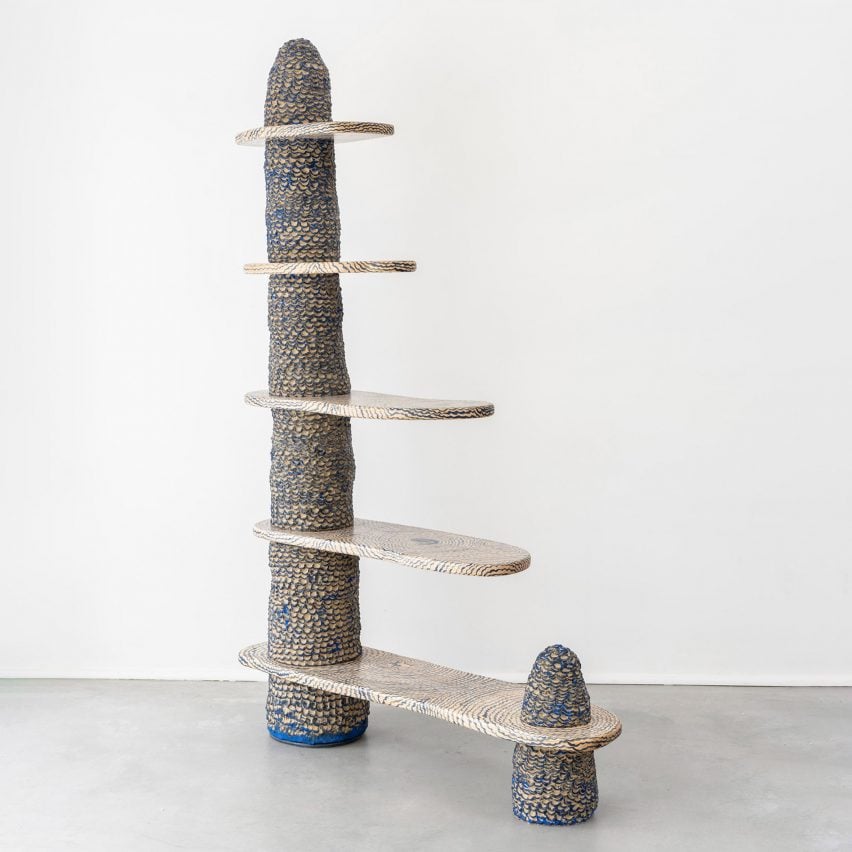
Solaris de Esgueva, 2022
This shelf is the first furniture piece Aparicio created using her signature hand-building technique – a riff on a conventional coil build, which she calls digit texture.
Instead of seamlessly blending the edges of the stacked clay coils, which form the base of her pieces, she uses her thumb to press the two layers together, creating a kind of scalloped edge.
"I set a simple rule for myself," Aparicio explained. "I only allow myself to go forward, so once I put the finger down I just move onto the next one and I can never go back and correct the shape."
"Letting the shape develop as I build without having full control makes the outcome much more improvisational and organic."
To form the totemic shelving unit, the ceramic sections are stacked on top of ashwood planks decorated with hand-drawn illustrations by Aparicio's sister Saelia Aparicio, rendered in the same deep blue as the "rudimentary" borosilicate glass and cobalt oxide glaze.
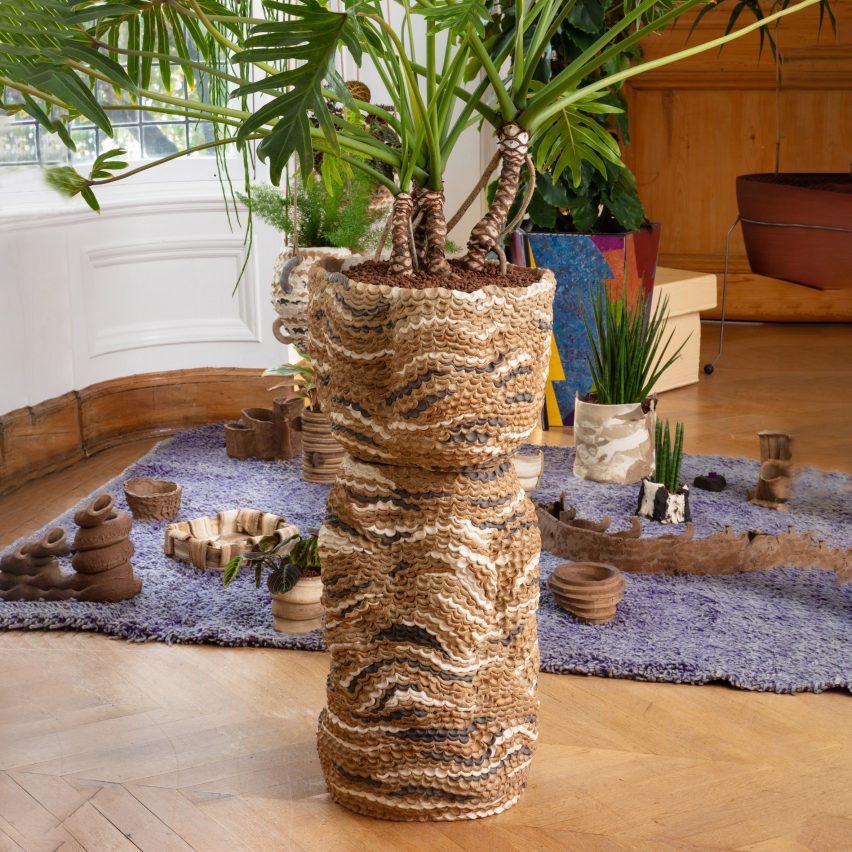
Jardinière, 2022
Aparicio was among 13 designers, including Martino Gamper, Max Lamb and Bethan Laura Wood, who reimagined a traditional plant pot as part of the group show No Ordinary Home at the 2022 London Design Festival.
Her towering Jardinière planter uses the same digit texture technique as the aforementioned shelving unit but is formed from layers of differently coloured clay, leading the ceramic to resemble a sedimentary rock.
"Normally in ceramics, the most standard way of working is you first make the form and then you apply colour later with a glaze," Aparicio explained. "But I like to be able to introduce colour while I build the piece."
"I think of it like weaving because you can add colours as you make," she continued.
Unlike many ceramicists who work with intricate textures and glazes, Aparicio says she only ever fires her pieces once in a bid to limit the amount of emissions produced by the energy-intensive process.
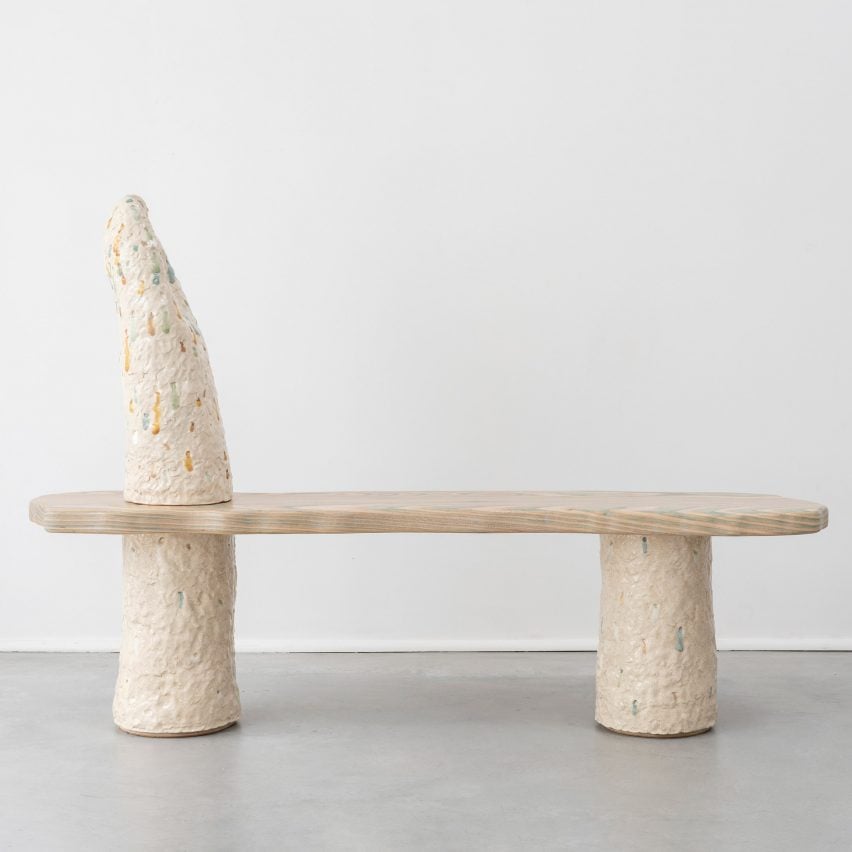
Sprout, 2022
The Sprout bench is another experiment in creating large-scale, load-bearing furniture pieces out of clay. This is made possible with the help of a metal core, which is anchored around the ashwood seat.
"The limit with ceramics, in my case, is the size of the kiln," Aparicio said. "So I was looking at ways of making things bigger by making them in parts."
"I think of it like a spinal cord," she explained of her system. "So the ceramics are the bones and the wood is like the cartilage in between."
The only ornamentation is provided by the chickpea-sized pieces of borosilicate glass, which melted all over the clay in the firing process, as well as the psychedelic pastel-blue wood dye used on the ash.
"I drew it on just to enhance the graining," she explained. "It's like makeup for wood."
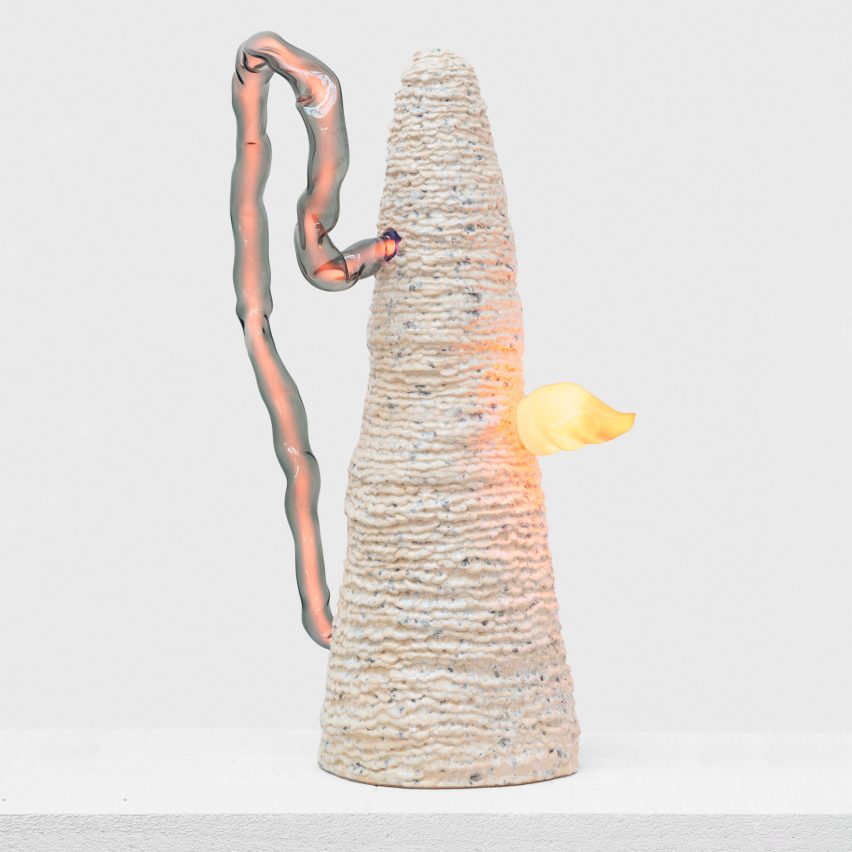
A♡J neon lights, 2023
During last year's Alcova show at Milan design week, Aparicio showcased a series of lights made in collaboration with her boyfriend, glass maker Jochen Holz.
The pieces incorporate both virgin borosilicate glass – used to form the neon tube lights – and waste offcuts of the same material, which were used to form the glaze.
"The neon lights Jochen makes are so magical," Aparicio said. "They glow but you don't know where the light is coming from."
"The way they work is: there's an electrode at either end and the neon gas is conductive," she added. "And when the electricity goes from one end to the other, the gas gets excited and glows."
"The electrodes are my least favourite thing about the neon lights, so I wanted to hide them using the ceramic. The tubes are so light and they seem so fragile, so I liked the thought of having something that holds them and also hides all these electronics."